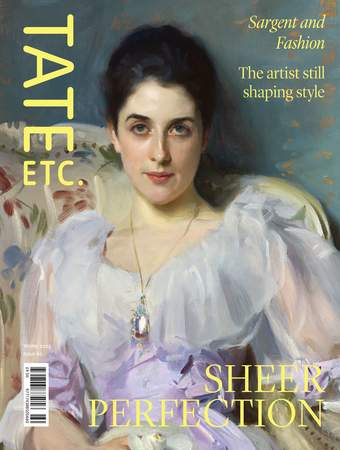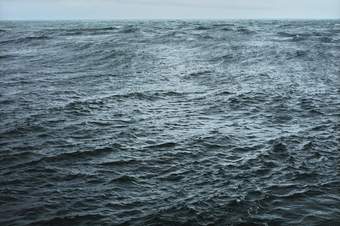John Singer SargentÔÇÖs Lady Agnew of Lochnaw graces the cover of our winter issue. Dressed in a flowing white tea gown embellished with a mauve silk sash, she meets the viewerÔÇÖs gaze directly. ItÔÇÖs an unusual pose for portraits ÔÇô both then and now ÔÇô but for a fashion magazine, itÔÇÖs a killer image. Lady Agnew, original cover girl, circa 1892.
This famous portrait will sit at the heart of Sargent and Fashion, a new exhibition opening at Tate Britain in February that presents Sargent as a painter whose influence on fashion has been felt from the late 1890s to the present. ÔÇśThere is now a class who dress after pictures,ÔÇÖ as one contemporaneous author put it, ÔÇśand when they buy a gown ask, ÔÇťwill it paint?ÔÇŁÔÇÖ Substitute ÔÇśpaintÔÇÖ for ÔÇśphotographÔÇÖ, and the same could easily be said of the fashion-conscious today.
On page 54, expert fashion journalist Sarah Mowerturns her eye to these portraits of gilded-age high society, as well as to the radical set who ÔÇśmight have walked straight out of a very recent Alexander McQueen or Prada showÔÇÖ. Elsewhere, curator Midori Yoshimoto describes a memorable encounter with fashion icon Yoko Ono and appraises her transformative participatory artworks that you will soon be able to experience at ╔ź┐ě┤ź├Ż (page 32).
We are also delighted to introduce Mx Mavis, the alter ego of our new ÔÇśagony artistÔÇÖ, Ajamu X. Mx Mavis will be on hand to offer creative-minded advice, including how to navigate your biggest art crush (page 110).
You might have noticed that this issue has arrived a little earlier than usual. We have shifted to quarterly ÔÇô which means one more Tate Etc. every year. See you again in the spring!
Tate Etc.
Contents
White Hoods, White Masks
Philip GustonÔÇÖs paintings call attention to some of the most urgent issues of his time, and ours. But to what ÔÇŽ
A Fragile Form of Transport
Jamila Prowse travels to Towner Eastbourne to take in this yearÔÇÖs Turner Prize, reflecting on questions of access, collaboration and ÔÇŽ
Two Sunflowers
How do you look at abstract art?
Two artists reflect on a painting by Joan Mitchell
Against the Flow
Selby Wynn Schwartz draws on Virginia WoolfÔÇÖs letters to sketch a portrait of Ethel Walker, an artist who valorised women ÔÇŽ
Fashion Folklore
Portrait of a Lady, probably Mrs Clement Edmondes reveals some unlikely resonances of royal fashion, writes Liberty McAnena
The Pearl Age
Adorned with New World gemstones, Robert PeakeÔÇÖs Lady Elizabeth Pope discloses the global flow of people and resources, writes Momtaza ÔÇŽ
ÔÇśEver was it thus for the museÔÇÖ: By Lauren John Joseph
A society doyenne excitedly shares the news that she is to sit for the portraitist John Singer Sargent
To See and Be Seen
Shahidha Bari demystifies the most essential element of opera attire: the cloak
Haute Portraiture
Portrait painter to the rich and famous, John Singer Sargent acted like a stylist, manipulating fashion ÔÇô alongside his trusty ÔÇŽ
Source Material
A blue silk sari worn by Sutapa BiswasÔÇÖs mother left a lasting impression on the artistÔÇÖs imagination
The Beautiful Blue
Miriam CahnÔÇÖs painting counters simplistic narratives of the migrant experience and grants the viewer imaginative space to practise empathy, writes ÔÇŽ
Redrafting the Real
Writer and photographer Stanley Wolukau-Wanambwa examines the convergence of the factual and the staged in Deana LawsonÔÇÖs portraits, now on ÔÇŽ
Taste Etc: Ruth Rogers
Pressed chocolate cake for Philip Guston
'Danger concentrates the mind'
Anne Bean recalls the perilous process behind an iconic series of photographs
Choose Your Own Adventure
Yoko Ono often invites audiences to participate in simple acts of the imagination or more active encounters with her artworks ÔÇŽ
Agony Artist: Dear Mx Mavis
Introducing Mx Mavis, Tate Etc.ÔÇÖs resident ÔÇśagony artistÔÇÖ. In the first of a new series, they help solve some of ÔÇŽ
Julianknxx
We talk to the artist about his multidisciplinary work, which explores the history of diaspora and imagines new possibilities for ÔÇŽ



